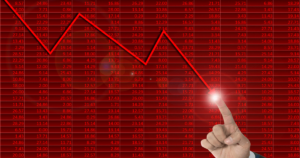Forex trading, also known as foreign exchange trading, is a dynamic and fascinating market that has evolved over centuries. Understanding the history of forex can provide valuable insights into its growth, development, and significance in the global financial landscape. In this article, we will delve into the rich history of forex trading, exploring its origins, key milestones, and the factors that have shaped it into the largest and most liquid financial market in the world.
Origins of Forex Trading
The origins of forex trading can be traced back to ancient times when early civilizations engaged in international trade. As people began to exchange goods and services across borders, the need for a standardized method of exchanging currencies emerged. This led to the development of the first currency exchange systems, where merchants and traders exchanged coins of different values based on their respective weights and metal content.
The Gold Standard Era
In the late 19th and early 20th centuries, the gold standard became the foundation of the international monetary system. Under the gold standard, currencies were pegged to a fixed quantity of gold, allowing for stability and predictability in exchange rates. This period witnessed the establishment of central banks and the emergence of foreign exchange markets in major financial centers such as London, New York, and Paris.
Key Takeaways
- Forex trading has a long and storied history, originating from the need for a standardized method of exchanging currencies.
- The gold standard era and the Bretton Woods system were significant milestones in the evolution of forex trading.
- The shift to floating exchange rates and technological advancements have transformed the forex market into a global and accessible marketplace.
- Major participants in the forex market include central banks, commercial banks, institutional investors, multinational corporations, and retail traders.
- Economic, political, and geopolitical events play a crucial role in shaping the forex market and influencing currency values.
Commonly Asked Questions
- Q1: How does forex trading work?
- A1: Forex trading involves the buying and selling of currencies with the aim of profiting from changes in their exchange rates. Traders speculate on whether a currency will appreciate or depreciate against another currency and take positions accordingly.
Conclusion:
The history of forex trading is a fascinating journey that highlights the evolution of the global financial system. From its origins in ancient trade to the modern electronic marketplace, forex trading has undergone significant transformations. The shift from fixed exchange rates to floating rates, along with technological advancements, has made forex trading accessible to a broader range of participants. Understanding the history of forex trading provides valuable insights into the factors that have shaped the market and allows traders to make informed decisions based on historical trends and events. As with any form of investment, it is essential to approach forex trading with knowledge, discipline, and a comprehensive understanding of risk management strategies to maximize the potential for success.








